This is a detailed (and lengthy) article on wedding videography gear. I’ve tried to cover everything here, as it’s a real passion. Enjoy!
Ah, wedding videography! The scene is set brilliantly – the bride looks stunning, the venue is beautiful, you have the perfect angle for this shot and…damn, the photographer just stepped into your shot for the 10th time today!
Yes, wedding videography can have its ups and downs. But, overall, it’s a fantastic industry to be involved with. Why?
- You get to capture the most special moments of a couple’s big day together.
- People (read: most people) are in high spirits as their family/friends are getting married. It’s awesome to be around good people and great fun when it all comes together!
- You can exercise your creativity and get well paid for what is essentially documentary event video.
I’ve been in this game for a long time. I’ve seen just about everything happen that can possibly happen at a wedding. Doing this kind of work teaches you many things, not least of which is learning to think on your feet and roll with the punches.
This Gear Guide that you’re reading is the equipment list that I wish I had when I first started filming weddings. I’ve broken it down into sections to help you find exactly what you need. The sections are:
- The Best Cameras for Wedding Video
- The Best Lenses for Wedding Videography
- The Best Stabilization Gear For Wedding Videos
- The Best Sound Equipment for Wedding Videography
- The Best Lighting For Wedding Video
- The Wedding Videography Beginners Kit List
- The Wedding Videography Intermediate Kit List
- The Wedding Video Advanced Kit List
Complete Guide to Wedding Videography Equipment
Let’s begin our guide by covering each aspect of equipment for the production side of wedding videography individually.
After that, we’ll put the gear into Beginner, Intermediate and Advanced kit lists to help you put together the right gear for your experience and pricing level.
Would you like to learn how to get more video production clients? Click the image below to get your free, downloadable guide to getting more video clients and growing your video company!
Let’s begin!
The Best Cameras for Wedding Video
First off, let’s take a look at the top cameras for wedding videography.






Canon EOS 5D Mark III
When Canon released the 5D Mark II, it changed the indie filmmaking world forever. It also changed the wedding videography world for good, too.
All of a sudden, we had immensely stunning 1080p HD footage that made wedding films look like cinematic movies. Sure, you still had to know what you were doing with the camera. But now we actually had an affordable technology that could give us near-cinematic quality video footage.
Whilst the 5D Mark IV is already out and making waves, I’m recommending the Mark III here for its all around workhorse capabilities and because I have a bit of a soft-spot for it.
Pay special attention here because this is the only camera on this list that can also double up as a photography camera. So if you want to make a living taking stills at weddings as well as video, there’s a big advantage to investing in one of Canon’s most beloved cameras.
Canon EOS C100
Ah, the C100…where do I begin. It’s fair to say that I absolutely adore this camera, and for good reason. It’s throning as the crown prince camera of indie filmmaking isn’t without reason.
It’s a solid all-rounder. Great for indie and narrative projects, as well as documentary and event video like weddings. Even all other uses aside for the purposes of this article, the C100 still shines as a pure wedding video camera.
One of the major advantages of the C100 over the 5D Mark III is the continous recording capability. The 5D Mark III (as well as other photo based cameras) has a 30 minute recording limit. This is based on a bizarre tax law that anything that can record longer than 30 minutes is considered a video camera.
The C100 doesn’t have that issue and is a true video camera in every sense of the word. The ability to record continuously is best felt in the wedding arena when it comes to the ceremony and speeches.
With DSLRs like the Mark III, the recording time limit was an issue if you wanted a master shot on, say, a static camera. Getting over to the static camera in time and re-clicking the record button could be a real ball-ache!
As well as that, the DSLRs do have a tendency to overheat, as anyone who’s shot event stuff on hot summer day’s will attest to.
The C100 is a true, rugged video camera, and it makes this list both for its obvious event videography capabilities and its abilities in other types of filmmaking.
Oh, and did I mention the quality of footage this thing produces is pretty amazing, too!? Here’s a wedding shot on the C100:
Sony PXW-FS7
Not everyone needs a Sony FS7 for a wedding. But, once people see the results in the amazingly awesome footage, nearly everyone wants one.
The guys I see using FS7s on weddings are usually companies who have a corporate/commercial video company as well, and they have an FS7 for that work. They then use the FS7 for high-end weddings.
It’s a great piece of kit and the slow motion capabilities are to die for, as this wedding highlight clip shows:
But there are drawbacks with the FS7. It’s not a perfect camera (what is!?) Still, the biggest drawback with the FS7 will be its hefty price tag. It’s out of the realms of affordability for lots of casual wedding videographers.
Here’s a solid FS7 review by the ever-reliable Philip Bloom:
The Best Lenses for Wedding Videography
The first thing to mention before we get into lenses is an important point: not all lenses work with every camera. Most people know this, but it’s worth belaboring the point here.
One of the key things about recommending the 5D Mark III and the C100 as wedding cameras is that they are both Canon cameras that use the EF mount.
This means that the EF lenses you use with your Mark III will also work with your C100. This makes the natural transition from the 5D Mark III to the C100 even more fruitful.
Canon EF 24-70mm f/2.8L II USM
This is a great walk-around lens. Awesome for shooting the majority of a wedding.
What can we say about this workhorse of a lens? It’s considered by most in the know as one of the best Canon lenses of all time. And rightly so.
Whether you’re walking around at weddings or other event filming situations, or shooting corporate/commercial work, this is a workhorse of a lense that is good in a whole range of situations.
Put it on a full-frame camera (like the 5D Mark III), or a CMOS like the Canon C100, and you have a piece of kit that won’t let you down in pretty much any situation.
It’s solid for interviews, fairly wide angle stuff, and is also a sturdy zoom up to 70mm. And when you need a little bit of extra zip in your zoom, pair it with the 70-200mm 2.8 for a great one-two punch.
Canon EF 50mm f/1.8 STM
The nifty fifty! Yes, this is a really cheap lens that has a great look to it.
It’s the baby brother of the 50mm 1.2 and 1.4, but this is still a great little lens that will help you get lots of lovely close ups with the so-called ‘blown out’ depth of field look.
This is the cheapest ‘blown out’ depth of field lens that money can buy. And you’ll find yourself using it throughout many parts of the day. Whether that’s during the Creatives mid-way through the day, or when light gets difficult and your 2.8s run out of kick without artificial light assistance.
Canon EF 70-200mm f/2.8L IS II USM
For longer range shooting, this is the Canon lense to get. It’s an exceptional lense for all kinds of event videography, including sports shooting.
This lense has superior optics and video image quality. I love using this to pick off ‘mingling shots’ of people during the reception.
If you’re far enough away, you can pick off really great two-shots of people talking. And the fact that it’s so telephoto means that you don’t have to be up in people’s faces in order to get brilliant shots. This means that you’re able to better capture those natural moments that a wedding couple swoons over when they see them.
Make sure you get the more expensive one with image stabilization, as it’ll pay off.
Rokinon 85 1.5 Cine Lens
Here’s a more speciality lense. Not going to include too many speciality lenses here, as this is a basic list and we could be here all day listing cool lenses!
Anyone familiar with the Rokinon lenses range for other other types of shooting knows how powerful and awesome a look you can get with this.
The 85mm is a good lense to use during the wedding prep shoot in the morning of most weddings. Especially good for close-ups and detailed shots that you can later use for inserts when you come to edit. Also good to switch out for the First Look and various other parts of the day.
A quick word on Sony lenses. I know I mentioned the Sony FS7 in the wedding cameras section, but I’m not going to cover all the Sony lenses here. The FS7 has a Sony E-mount, but it’ll also work with Rokinon lenses and even Canon EF mount lenses (with an adapter), as well as others.
Here’s a video:
The Best Stabilization Gear For Wedding Videos
Tripods
All important. Too many beginners think shooting handheld 90% of the time is somehow cool because they saw a still of their favourite indie DP doing it one time.
Get a solid fluid head with a sturdy tripod like the Manfrotto MT190X3. Manfrotto are some of the best manufacturers here. You’ll need a number of fluid heads to go with your tripods, monopod, slider, etc. But, obviously, chopping and changing with the same one is an option when you’re starting out.
I like the Manfrotto 500 series, especially the Manfrotto MVH500AH tripod.
If you’re after something a little cheaper, that still has a lot of the bells and whistles, then checkout the SOMITA Professional Video Tripod ST-650.
Monopods
The best tripod for wedding vidography is actually a monopod. Okay, I jest – but the monopod is such an amazing piece of kit. It’s fantastic for wedding days (and all kinds of event videography, actually), as it is unobtrusive and helps you get in those hard to stand areas.
Think about it, how many times have you been at a wedding (or some kind of event) and struggled to get off 3 legs of the tripod through doors, corners, corridors and other places? It’s not a good look!
Equally, you’ve no doubt seen a frlustered videographer at a wedding trying to squeeze his tripod through a church door whilst everyone’s leaving!
If you’ve ever used a tripod at a wedding, you know two things:
- It’s sometimes essential (static shots of the ceremony and the speeches).
- For all other purposes, a monopod is nearly always the better option.
Yes, monopods are for those occasions when one leg is better than 3! Which it nearly always is at weddings, aside from the ceremony and the speeches (and even then, a monopod can be used effectively!)
Again, I really like Manfrotto monopods. I use the Manfrotto Xpro Aluminum Video Monopod With 500 Series Video Head for a lot of uses, including weddings. But I also own quite a few different monopods.
Like with a tripod, you really need to get your hands on some and test them to find out which monopod is for you. Ask friends or colleagues to let you have a test drive.
A monopod is a very subjective piece of kit, so your mileage might vary!
Gimbals
When it comes to gimbals, I really like DJI’s Osmo series of handheld camera gimbals.
If you get the right attachments, you can have a pretty cool setup for tracking shots and slow-mo stuff throughout the day.
We especially like the Osmo for shots of the bride as she’s walking into the church (or ceremony location). You can follow behind her from low down getting great shots of her dress whooshing. Or walk backwards as she walks slowly towards the camera – just don’t fall over the altar!
The attachment enables you to rig your phone to the device, adding a walkaround monitor which is really handy. Obviously, you’re recording to card not via the phone – adding the phone to proceedings just makes viewing the shot a heckuva lot easier!
Also, remember that the Osmo works with DJI’s drone range, adding another element to what you can do with this great piece of equipment.
If you’re after an Osmo, you can get the full DJI OSMO+ Plus Handheld Fully Stabilized 4K Camera Bundle.
DJI’s Ronin series is also really cool and has many applications. I especially like the DJI Ronin 3-Axis Stabilized Video Camera Gimbal.
Sliders
Not entirely necessarily when you’re first starting out, but prices have come down a lot and it’s such an awesome affect that you’ll love seeing in your films!
Just don’t get addicted to slider useage to the point where it becomes like 75% of the shots in your wedding films! Not only does that look ridiculous, but it cheapens the affect and stops it being special. This is especially true when people come to look at your portfolio when making a decision on which wedding videographer to go with.
I’d recommend the Konova range of sliders as a good entry level. The Konova K3 Slider Kit is cool.
If you’re after something a bit more advanced, you can’t go wrong with Kessler’s Stealth (Traveler Length), Flat Mount Adapter.
The Best Sound Equipment for Wedding Videography
They say people will watch an online video is the video is subpar. We are, after all, used to watching documentaries and reality shows with all kinds of varying video quality.
What people won’t put up with is poor audio quality. It’s jarring. Like fingers down a blackboard.
And this is never more true than in the world of wedding videography. If you don’t get your audio right, then you better believe people are turning off your films faster than Donald Trump tweeting in reaction to something that irks him!
It’s become something on a cliché to talk about how important sound is to the quality of your wedding films, and how hellaciously undervalued it is in most video that you see on the internet.
Yes, couples will stomach a bit of grainy footage here and there, but hearing terrible audio (especially for the vows!) is like scratching your fingers down a blackboard! And that stuff will get pulled off faster than a bride’s panties when they get back to the bridal suite!
Alright, terrible analogy there.
Get a RODE VideoMic on top of your DSLR for recording sound as you travel around the event. It won’t get you A+ sound all the time, but it’ll be decent background hubbub sound. Pro tip: using background hubbub in your wedding videos can really raise the quality of the overall production. Sound engineering is highly underrated.
Mic up the groom during the ceremony with a Sennheiser ew 112-p G3 wireless mic system for awesome sound quality, and then do it again during the speches. Just make sure you re-clip it to each person everytime there’s a speaker change.
Use a Zoom H4N for picking up background sound in great quality. Can be placed in the church near the front, on the speeches table, or anywhere else you can craftily hide it during the day.
The Best Lighting For Wedding Video
At the end of the day, lighting is a luxury in wedding videography for a variety of reasons:
- Time is of the essence in event videography and setting up elaborate lighting setups just isn’t top of the list of priorities.
- The run and gun nature of most styles of wedding videography means you just don’t have the ability to carry extra gear a lot of the time.
All this is to say that when you’re hustling from location to location, often with a strict time pressure, you just don’t have the time and resources to set up lighting.
The times when you do need it most are often the times when you really don’t have the time to set good lighting up. Let that sink in. If you’ve shot more than a few weddings, you’ll know what I mean here straight away.
With that said, let’s talk about some little equipment basics that will stand you in good stead for most weddings.
For entry level, you can’t go wrong with a basic DSLR attachment LED light on top of your camera. The Neewer 160 dimmable LED light is a bargain. This will ‘light the way’ and give you that extra kick when your aperture is failing you.
You can also go more advanced with the Neewer® 2x 160 LED light kit Dimmable Ultra High Power Panel Digital Camera / Camcorder Video Kit, which comes with lights, lighting stands, a soft-box and more.
Yes, these setups will help out your image quality in low light situations, but as we’ve discussed, you’re also adding an extra cumbersome element to the day. This extra element might not suit every couple or venue.
Never forget the extra safety concerns of working with lights and the extra wires they often entail. If you’re used to shooting corporate work, you might not be used to working around kids and drunken people. If there’s one thing I know about weddings it’s that there are lots of kids and drunken people there. Always take safety precautions.
You should also always measure the ease of use and efficiency with the footage quality return, not just the monetary concerns.
The Best Storage Options For Wedding Videography
A couple of notes on wedding video storage options first off. One on wedding day storage issues and another on ‘editing storage’ issues.
Yes, 64GB memory cards sound cool, but in practice they’re very dangerous indeed – shooting an entire wedding on one card is a recipe for potential disaster. Imagine if that card got lost or corrupted!?
Want to know how I learned this pointer?
Minimise the potential damage by shooting on multiple smaller capacity cards and regularly backup/upload your footage to hard drives throughout the day.
Don’t put “all your eggs in one basket,” as they say.
As we’ve discussed before, with the ever-present threat of a hard drive failure, it’s best to use a RAID system to make sure your all-important footage is safe. After all, it’s not like you can go back and do a re-shoot of a wedding, right?
Here’s a graph that shows the failure rates of the various hard drives made by some of the top manufacturers:
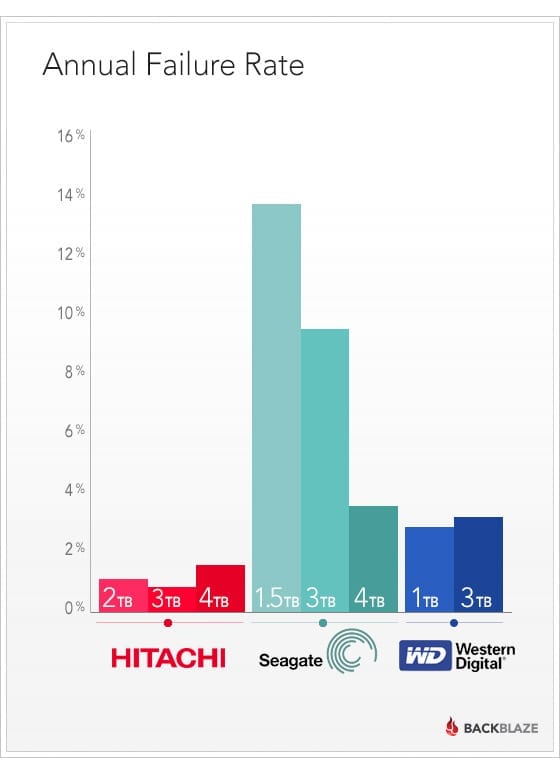
- Memory cards.
- Hard drives.
Memory Cards
For memory cards, I really like (and trust) SanDisk cards. For both CompactFlash (CF) cards and SD cards, I highly recommend the SanDisk Extreme range or the Ultra range, but there are of course many choices out there.
Three important notes on memory cards:
1. Don’t go for cheap cards thinking you’re getting value for money. This is really not an area to cheap-out on, as it could be the difference between reliable cards and cards that will corrupt easily.
2. Go with memory cards that are no more than 32GB capacity. I have lots of 16GB and 32GB cards. As I mentioned earlier, putting too much footage on one card (and not uploading footage during the day to a hard drive) is a recipe for disaster.
The chance of loss or corruption is an ever-present reality, so take steps to guard against those issues. On most wedding shoots, you’ll have some downtime whilst the guests are eating, so take advantage by backing up your footage to hard drives during that time period.
Sometimes we’re too busy to backup footage during the day for whatever reason, so change out your cards regularly and don’t try to fill one 64GB card, as you’ll be playing with fire!
3. Make sure you buy cards that are fast enough for video camera reading. A good rule of thumb to be safe is to look for a minimum speed of 30MB/s, which is displayed on the front of the card.
Hard drives
With hard drives, I normally spilt this into two different types:
- On-the-go, on-set, on-location hard drives.
- At-home, safe-in-my-office backed-up behemoth hard drives.
For option 1, I go with the LaCie Ruggeds and the Transcend Military tested hard drives. This are hard knocks and will take some pummelling before breaking. Exactly what you need when on the go.
In fact, in their documentation, the LaCie Ruggeds even feature pictures of a car running them over! I’ve never tried that, but I’m pretty convinced of their strength and durability.
For option 2, I use G-Tech drives for larger storage solutions that are kept in the office for the most part. This is where your RAID system should come into play to ensure that all your footage is super-safe.
Speaking of which, not only should you use RAID, but you should also upload everything to cloud storage, too. That way, you’re ultra backed up and you’d need to have a catastrophic issue with your home at the exact same time that Google’s servers have an equally catastrophic failure.
Other Things You Probably Don’t Need, But Want
Okay, that title above is a little tongue in cheek. These items are great additions to your wedding videography equipment list. It’s just that some are so overused now that they’ve become something of a meme (see: drones at weddings).
Still, all of these are additions to your equipment that will help you capture more professional and cinematic wedding footage.
Drone
Aerial/drone videography has become huge in the last few years. More and more couples are requesting it for their wedding films after seeing a clip here and there on social media.
We offer it as a service add-on, but outsource the work through reliable companies that have the relevant qualifications and insurance, rather than try to do everything ourselves (and take on that legal quagmire!)
We have a full list of the best drones that money can buy, so check that out.
Steadicam
I remember years ago, when I was first getting into filming weddings, I watched a few tutorials with a guy who shot all of his weddings using a steadicam. And about 70% of his footage (at least in the Highlights films I saw) was steadicam footage! Yes, crazy!
Don’t be that guy.
On the other hand, a steadicam can be a good addition to your kit list if you:
- Know how to use it properly.
- Don’t overuse it.
- Use it creative to get nice tracking shots, etc.
In most cases, simply hiring a ‘man with a steadicam’ service might be best for you. Alternatively, just go with a solid gimbal system like DJI’s Ronin.
Cranes & Jibs
They were all the rage in the wedding video scene for a while. For the most part, cranes and jibs just aren’t practical for event videography unless…
- Most of the action is taking place in one area.
- You have time beforehand to set up the crane (i.e the bridal preparations at the start of the day).
- You have some kind of crane/jib that can be set up in less than 1 minute.
Wedding videography is fast and often random. It teaches you to think fast and on your feet. For large parts of the day, lots of people don’t know what they’re doing or what time it is. Timings get thrown out and things happen on the spur of the moment (thanks in large part to alcohol!)
For that reason, you just don’t have time to set up a crane, even if you can get some cool shots with it.
With that said, if you do fit into one of the three options above, the ProAm USA Orion Jr DVC60 Compact DSLR Video Camera Jib Crane Tilt is a great bet for weddings.
Wedding Videography Kit Lists
I’ve found that when you’re talking about gear, people tend to want to hear about how each piece of equipment relates to the others. In that way, kit lists seem to be pretty popular.
I’m going to break down the above gear into what I recommend as Kit Lists for wedding videography. We’ll going to cover:
- Beginners Kit List
- Intermediate Kit List
- Advanced Kit List
Now, firstly, where do these designations come from?
When I talk about Beginner, Intermediate and Advanced, I’m talking about them in both an experience level and pricing level way. So, for example, I’m assuming that when you’re at the price point to afford an FS7, you have the relevant experience level to justify working with this camera.
When I talk about price points, I’m talking about what you’re charging for your work. As a useful rule of thumb, you should always be charging more than you think you can get away with. As human beings, we tend to err on the side of caution and this often undervalues our work and the value we bring.
So charge more, make more money for yourself and remove yourself from that segment of the wedding industry that are helpful to drive down prices with cheap, crappy productions.
So, in this way, as you gain more experience shooting weddings, you will charge more money and buy better kit. There’s a bit of a chicken and egg thing here and a minor Catch 22.
Yes, people certainly come into the industry with lots of money and instantly get the best kit. But, as we’ve talked about before, having amazing gear certainly doesn’t make you a great wedding videographer.
Let’s start with the Beginners Kit List:
The Wedding Videography Beginners Kit List
- Camera – Canon EOS 5D Mark III
- Lenses
- Sound – There is no beginner sound kit. Use lav mics, etc – you must get this right!
- Tripod
- Monopod
- Basic lighting – DSLR mounted light
The Wedding Videography Intermediate Kit List
- Camera – Canon EOS C100
- Lenses
- Sound – Of course.
- Tripod
- Monopod
- Slider
- DJI Osmo
- Lighting
- Drone
The Wedding Video Advanced Kit List
- Camera – Sony FS7
- Lenses
- Sound – Yes, the world (or at least the wedding video industry) revolves around good sound.
- Tripod
- Monopod
- Slider
- DJI Osmo
- Lighting
- Drone
- Crane / Jib
- Steadicam
Wedding Videography Gear – In Conclusion
Wow, that was a lot bigger than I expected it to be! Sometimes when you are really passionate about something, it’s hard not to just keep writing!
I hope this guide to the best wedding videography gear has been useful for you. Filming weddings is a fantastic career, it really is! There are highs and lows, but for the most part you’re working with great people who are experiencing peaks of emotion that make for great films.
Ensure that you raise your prices to make sure that you’re only attracting the kind of clients that you want. After all, you don’t want to be working your butt off for pennies.
Curious to learn more about the wedding videography business? I have written a number of guides that cover aspects of wedding video production not related to the gear you need. Here they are:
Starting a Wedding Videography Business: Part 1
How to Get Started in Wedding Videography: Part 2
Shooting Wedding Videos: 9 Things That Will Happen
This guide will be updated regularly to reflect changes in the industry and market.
Want some more gear specific Buyer’s Guides? I can help you with that.
We hope you’ve found this comprehensive guide to wedding videography gear helpful. What did we miss? What do you love using that we didn’t include here? Let us know in the comments below.
We have Gear Buyer’s Guides on every type of Filmmaking Equipment!
Matt Crawford
Related posts
4 Comments
Leave a Reply Cancel reply
This site uses Akismet to reduce spam. Learn how your comment data is processed.


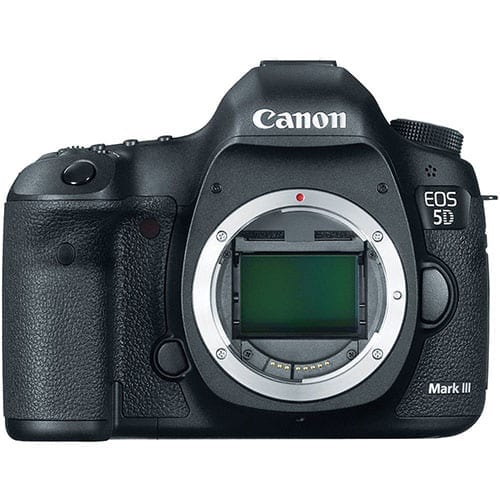

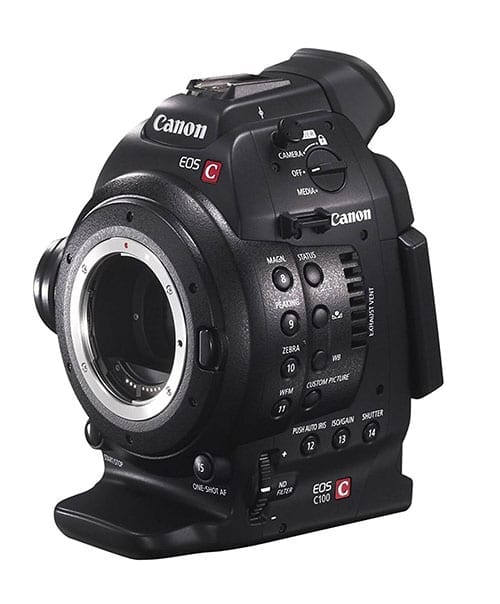
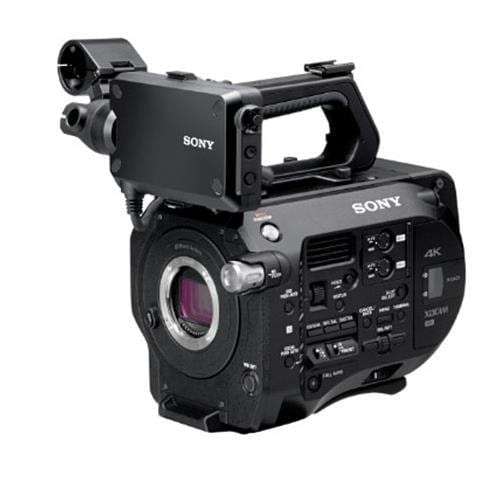


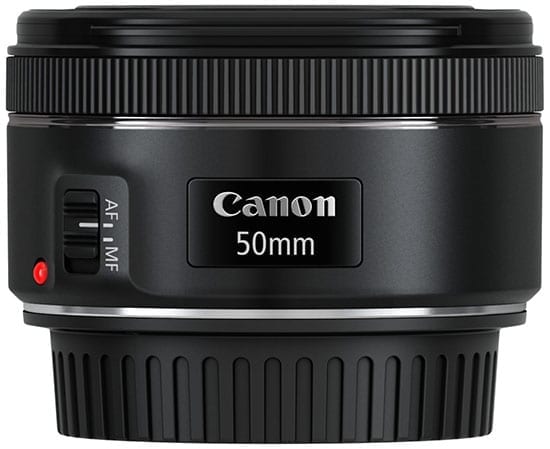


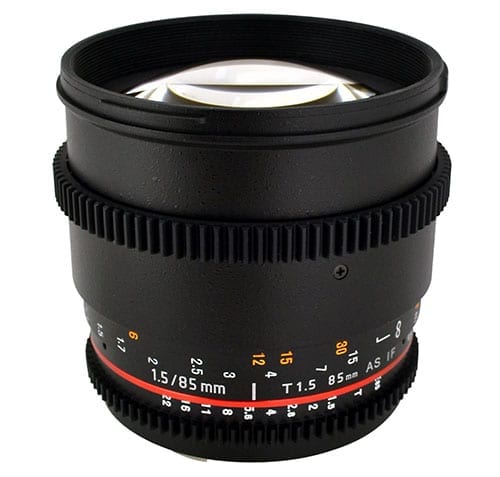
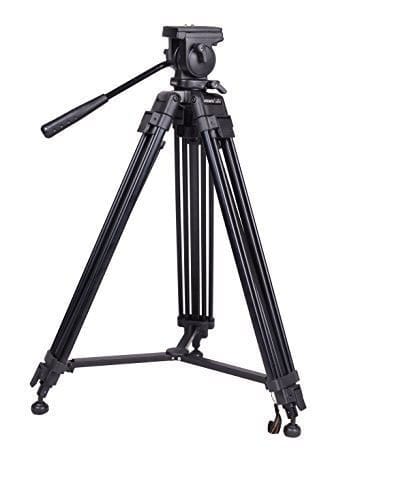
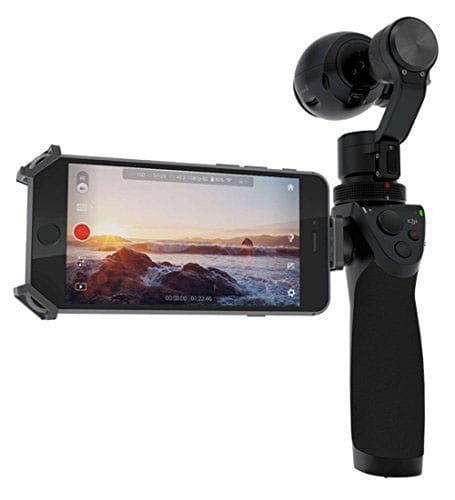
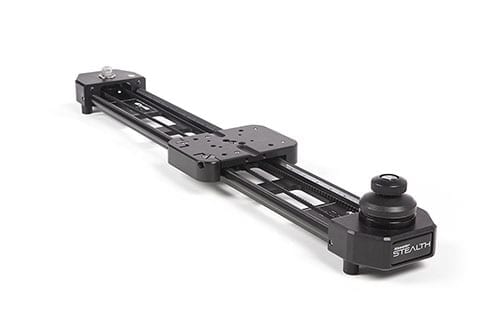
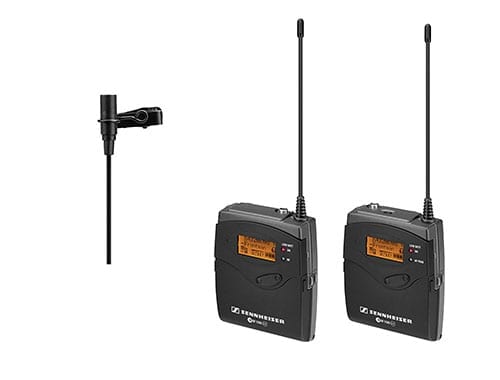


This is so useful and thorough, surely a masterpiece.
Cara
Thanks, Cara! That’s great to hear!
This is the best wedding video gear list I’ve ever seen. Fantastic breakdown!
Cheers, Marcus!